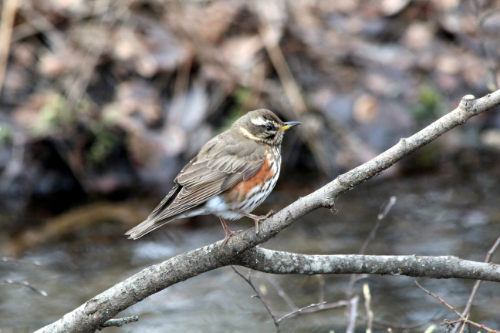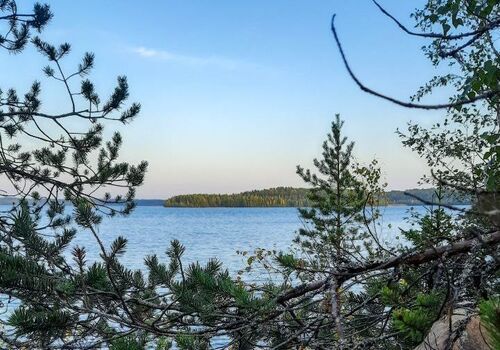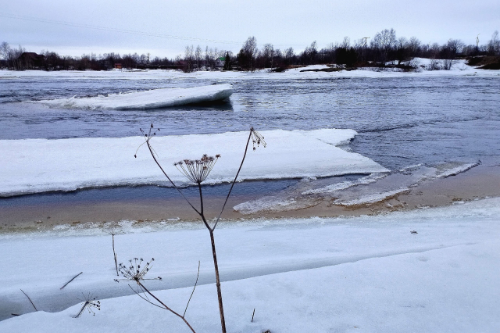Russia is creating a unified system for tracking changes in bird populations. At present the country has a number of schemes for monitoring the status of certain populations, which are set up and maintained by individual specialists, small groups of observers or organizations. Following the initiative by the Zoological Museum of the Lomonosov Moscow State University, building of the unified monitoring network started in the Moscow Region. This year several more Russian regions, including the Republic of Karelia, will join it.
The resultant data will be compiled together with the outputs of the Pan-European Common Bird Monitoring Scheme (PECBMS). It operates in 30 countries, helping reveal population size trends for specific species at the national and the pan-European levels.
Almost all professional ornithologists of Karelia are involved in this large-scale effort. However, scientists alone do not have enough capacity to build the monitoring network.
– Professional ornithologists are not numerous enough to cover the entire territory of the region. In Europe, where this system has been in operation for 40 years, birdwatchers - amateur ornithologists - actively participate in observations. The methodology itself implies the involvement of a wide range of researchers. We know that Karelia also has many nature lovers keen on bird watching, and it would be great if they could join this initiative, - said Maria Matantseva, Senior Researcher at the Zoology Laboratory of the Institute of Biology KarRC RAS.
The main thing needed of those who decide to join the project is willingness and readiness to participate in the observations for at least five years. It is the multi-year data series that help to track changes. The participant is to choose a convenient route some two kilometers long in the forest or in an open area, walk it 2-3 times during the nesting period ( which is the last third of May - beginning of June in Karelia), and record all the birds seen or heard on this route. We speak exactly of common, mostly passerine birds, which is why a bird-watcher's knowledge is usually sufficient. Besides, there is still time to prepare. Mobile applications such as Birds of the Volga Region or iNaturalist, as well as traditional identification keys on paper can help to identify birds by their appearance or song.
– Identifying a rare bird wiould of course be difficult, but for projects such as this common knowledge suffices. As to the apps, some of our participants are already successfully testing the Birds of the Volga Region - the species compositions substantially overlap in our regions. Besides, you can always contact us. If you happen to take a picture of a bird or make an audio recording, we will be happy to help with the identification," said the ornithologist.
At first, a database of the participants of the newly established network is created. All routes will be registered and submitted to the coordination center. Next, scientists will evaluate the quality of the potential data, and the region will be officially involved in the project.
– Conducting such a two-kilometer survey is not so difficult. The main challenge is to conduct it at the same time in the same place for five years. Therefore, whoever joins the project must feel the commitment. Unfortunately, we cannot be everywhere in Karelia at once, so when people with a passion for birdlife take photos and share their observations with scientists, it is very valuable. For example, it was thanks to a volunteer that we recently learned about the first case of a Eurasian penduline tit nesting in Karelia, - said Maria Matantseva.
If you’d like to become a participant of the large-scope bird population monitoring network, write at ssaves@gmail.com before May 1 – you’ll be signed up and given instructions on the methods. For nature lovers, participation in this project is a chance to contribute both to global science and to biodiversity conservation on Earth.
Photo by M. Matantseva /Institute of Biology KarRC RAS
News

March 16, 2023
Karelian ornithologists invite nature lovers to join the pan-European common bird monitoring event. To do this, you need to sign up for the project, choose a convenient survey route and record all the birds you see or hear along this route during a certain period of time. These data will help scientists keep track of changes in bird numbers.
See also:

July 7, 2025
A successful introduction: the zander has settled down in Lake Sundozero and continues to spread
Scientists of the Institute of Biology KarRC RAS have published the results of long-term observations over the population of the zander (or pikeperch) introduced to Lake Sundozero more than a half-century ago. They confirm the species has become naturalized. Maintaining the population requires regulation of harvesting, protection during spawning, and tending of spawning grounds.
Scientists of the Institute of Biology KarRC RAS have published the results of long-term observations over the population of the zander (or pikeperch) introduced to Lake Sundozero more than a half-century ago. They confirm the species has become naturalized. Maintaining the population requires regulation of harvesting, protection during spawning, and tending of spawning grounds.

June 26, 2025
Ice-related phenomena on rivers emptying into the White Sea now last three weeks less than 60 years before
Ice on northern rivers now forms later while ice-off occurs earlier. Karelian scientists confirmed this having analyzed 64 years of marine and meteorological data from the estuaries of rivers draining into the White Sea along its western coast. Climate change has bit three weeks off the ice-covered period on these rivers. The reductions have been the most significant in the last 30 years, aligning with global warming trends in Arctic water bodies.
Ice on northern rivers now forms later while ice-off occurs earlier. Karelian scientists confirmed this having analyzed 64 years of marine and meteorological data from the estuaries of rivers draining into the White Sea along its western coast. Climate change has bit three weeks off the ice-covered period on these rivers. The reductions have been the most significant in the last 30 years, aligning with global warming trends in Arctic water bodies.

June 23, 2025
Citizen science and web technologies help researchers study insects of Karelia
More than 30 insect species not encountered in Karelia previously have been revealed by entomologists from KarRC RAS during their expeditions and using data communicated by active participants of the iNaturalist portal – an open platform for collecting biodiversity data.
More than 30 insect species not encountered in Karelia previously have been revealed by entomologists from KarRC RAS during their expeditions and using data communicated by active participants of the iNaturalist portal – an open platform for collecting biodiversity data.



